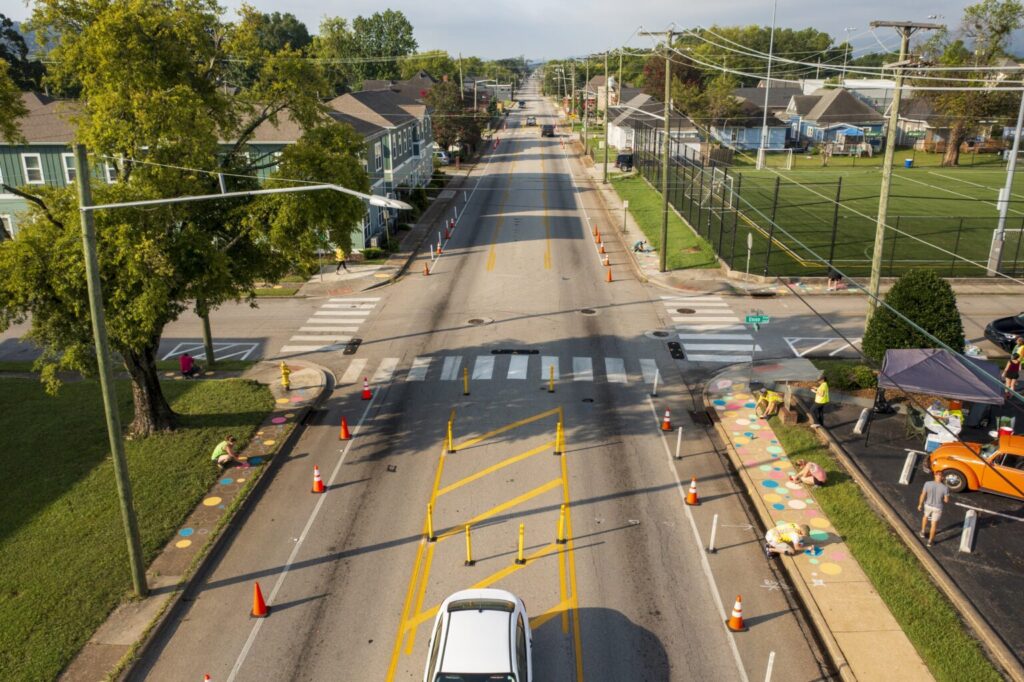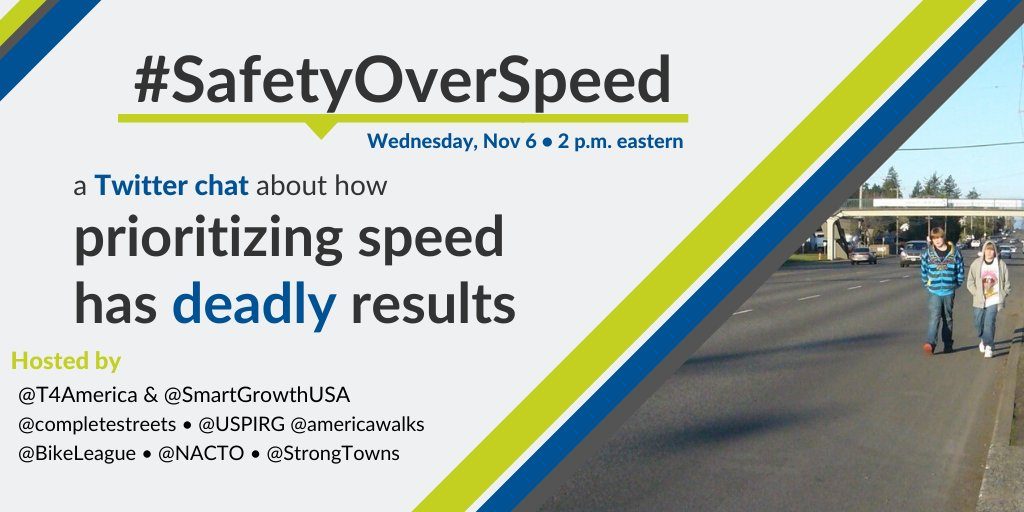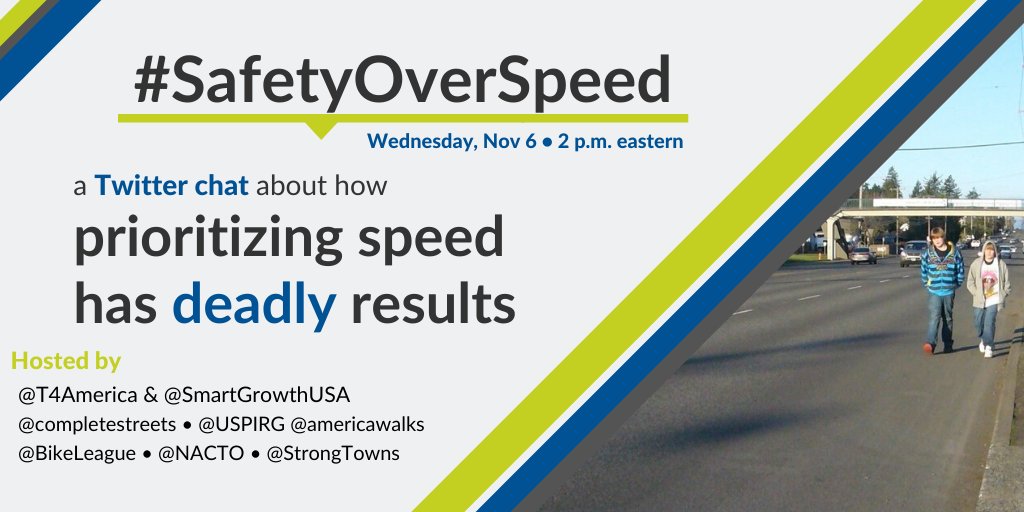
Our seven favorite tweets from the #SafetyOverSpeed tweet chat

Last week we hosted a tweet chat to discuss the importance of prioritizing #SafetyOverSpeed, in tandem with our week of blogs discussing our second principle for transportation policy. Here are our seven favorite tweets from the chat.
Thanks to our tremendous co-hosts for making the Tweet Chat a success: Smart Growth America, the National Complete Streets Coalition, U.S. PIRG, America Walks, the League of American Bicyclists, the National Association of City Transportation Officials, and Strong Towns.
Missed Transportation for America’s Safety over Speed blog posts? Check them out.
Now to our favorite questions!
Why are there more deaths on arterials—”stroads” in the words of Strong Towns—than on highways with speed limits as high as 70 mph?
A1: Stroads mix speed and complexity, and it’s the combination that makes them the deadliest type of roadway. Fast traffic doesn't belong in environments where people are walking and cars are turning in and out of the roadway. #SafetyOverSpeed https://t.co/IuJRaysC9G pic.twitter.com/TMnE5UsgGR
— Strong Towns (@StrongTowns) November 6, 2019
Why are most local and arterial roads—particularly in sprawling suburbs and cities—still being designed for high speeds?
A2: Because people mistakenly equate speed with efficiency and effectiveness #SafetyOverSpeed https://t.co/wF4HUmMTxa
— America Walks (@americawalks) November 6, 2019
Lowering speed limits alone does little to reduce speeds. How can we better slow vehicles on local and arterial roads?
Your average driver could identify the elements of a street designed for #SafetyOverSpeed if you asked them to think about it: narrow streets with narrow lanes, trees, sidewalks … a lot of the same things that make a street pleasant for walking. https://t.co/pcoqG7zrs6
— Chris Rall (@cjrall) November 6, 2019
According to Dangerous By Design, older adults, people of color, and people walking in low-income communities are disproportionately represented in fatal pedestrian crashes. Why, and how can we fix this?
For too long, communities of color, seniors & working-class neighborhoods have been overlooked. We need to invest in safe, complete streets & give people more efficient & affordable modes of connectivity. Public transit, bike lanes & walkable streets? It’s a no brainer. https://t.co/42k82o3wEO
— Congressman Chuy García (@RepChuyGarcia) November 6, 2019
What are some economic benefits of slowing down streets?
Slowing down streets unlocks their value as public space (80% of public space in cities!). Businesses thrive on streets with low vehicle speeds and high pedestrian activity.
Take a look:https://t.co/bQpMyEI6rX #SafetyOverSpeed https://t.co/045XSArjrP pic.twitter.com/tpaDEtm8FX
— NACTO (@NACTO) November 6, 2019
Transportation is the largest source of U.S. carbon emissions. How can lowering speeds help reduce those emissions?
A: Emissions are harmful to the well-being of our communities. To protect our public health and our climate, we must improve public transit systems and design our roads to make it safer for people to walk or bike. This will help our cities and lower emissions. #SafetyOverSpeed https://t.co/DLC8Xi1n8k
— Mark Takano (@RepMarkTakano) November 6, 2019
Speed is often considered a local and state issue. Why should the feds get involved, and how can they support communities that make their streets safer?
A7: Want to test local authority? Watch a city or town ask to lower speed limits on a state road. Sit back and watch the fireworks. #SafetyOverSpeed (1) https://t.co/HihXkHRlhW
— Transportation for America (@T4America) November 6, 2019




